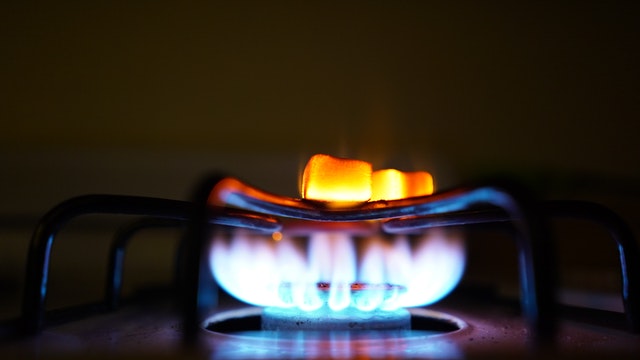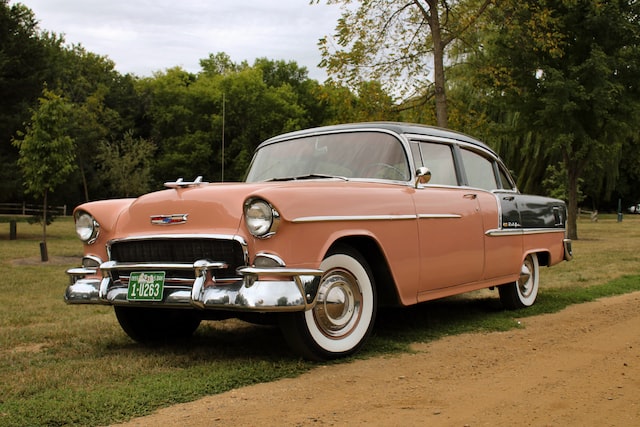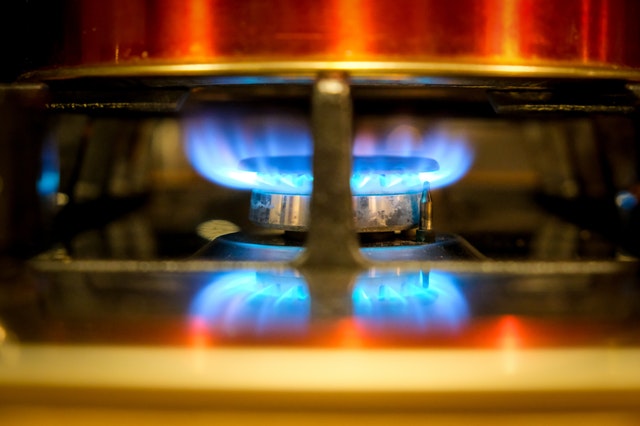Most of us often think that cars consume more or less gas entirely depending on the manufacturer’s specifications. However, in reality, not every driver knows the exact method to calculate mpg as well as save gas consumption. So, how to calculate gas mileage and how to save gas? Let’s follow this article for more tips on gas mileage calculation.

How to calculate gas mileage?
In some new car models today, the gas consumption level is pasted on positions such as the door glass or on the catalog specified by the manufacturer. This is actually not the exact number! Because it depends on environmental conditions, external influences…
The formula for gas mileage calculation
The formula for calculating the actual car gasoline norm is calculated in the following way: taking the number of liters of gas poured in the 2nd filling divided by the number of kilometers traveled between the 2 fillings (1st and 2nd time). As a result, the gas capacity is consumed at a distance of 1km, then the X100 will output gas consumption per 100km.
Steps to calculate gas mileage
- Step 1: Check before you start measuring
This is an important step so that you can rely on it to measure for the most accuracy. First, you have to fill the tank with fuel. One thing to note: just because it’s full of fuel doesn’t mean it’s full. What you should do at this point is to shake it slightly so that the gas can fill the gaps inside the tank, shake it a few times, every 20 seconds to make sure that the gas is full.
- Step 2: Record the actual number of kilometers the car has traveled
- Step 3: Start checking the reality.
To get the results you need: refuel the tank to full (during this refueling process, remember to still shake slightly like last time). Record the number of kilometers the vehicle has driven (the number of kilometers recorded in the following refueling is subtracted from the number of kilometers recorded in the previous refueling) and the amount of gas that has been refilled (the data will immediately show the cylinder you pour fuel).
- Step 4: How to calculate car gas consumption?
To calculate the actual gas consumption of a car, we do the following calculation: Take the number of liters of gas poured in the next time divided by the number of kilometers that the car has traveled (the data you have in the second step). The result of that division is the gas capacity consumed over a distance of 1km. If this data is multiplied by 10, it will produce the amount of gas consumed by the car for a distance of 10km.
Some notes when figuring gas mileage
- Experts have determined that the more distance the car travels, the more accurate the results will be when calculating the consumption norm. In addition, you should measure the gas capacity as accurately as possible with a graduated cylinder to avoid errors during calculation.
- When calculating gas consumption according to this method, you need to pay attention to conditions such as whether the car is traveling in the city more or less, the road is good or bad, whether there are often traffic jams or not…
- It is advisable to fill the same gas station both times. Because doing the above will help limit the calculation of error norms during the calculation.
When do you need to refuel your car?
According to experts, it is not advisable to wait until the car is about to run out of gas before filling it up. Instead, refuel when the gas needle is about to return to position E or when conditions permit. This is an important car refueling note to know. If the vehicle is operated in low gas conditions, it will be very harmful to the engine and related systems.
On the other hand, when the car is almost out of gas, the engine will use the stored gasoline. This is not the optimal choice. Because if the bottom of the fuel tank is covered with dirt, this amount of dirty gasoline will put pressure on the fuel filter. In case the dirt is not filtered clean, dirty gasoline enters the combustion chamber, the combustion process will be affected, leading to reduced engine performance. More seriously, it can reduce the service life, causing damage to the internal components of the engine.
Read more >> What Is Oil Sludging? How To Clean Sludge From Engine?
How to refuel your car to avoid wasting money?
Every month we spend a large amount of money on fuel, but not everyone knows how to save money and avoid fraud.
- Refuel when it’s cool
According to experts, you should fill up with gas in the morning and evening, and avoid filling up at noon. Because gasoline has the property of expanding with temperature. The higher the temperature, the more gasoline expands and vice versa. Therefore, refueling when it is cool will be more beneficial. Although this difference is not large, it is still worth applying and gradually forming a habit.
- Do not overfill the tank
If you can calculate the distances to go, even long distances, the driver should not overfill the fuel tank. Overfilling with gasoline only makes the car heavier, the engine takes more load, so it will consume more fuel. However, that doesn’t mean you need to put in too little gas. Because, pouring less gasoline causes the driver to frequently visit the gas station, and the details that are not submerged in gasoline for a long time can be corroded.
- Requires meter to be returned to “0” before pumping
Although there is a regulation that the meter must return “0” before pouring, there are also cases where you put gas in but forgot to set the meter to “0”. This makes it difficult to track and calculate the actual amount of gasoline pumped. On the other hand, there is often an error between pumps so you may be the one to lose. Therefore, before refueling, return the meter to “0” before pumping. Although in the US, drivers have to pump gas themselves, many people still forget this step, causing waste.
- Do not start the car when you pump the wrong gas and oil
If this mistake is detected immediately after refueling, then you absolutely must not start the engine. You need to quickly suck up the entire fuel mixture including gasoline and oil out by using a hand pump to pump out all the oil and gasoline. Then you must put new fuel (fuel suitable for the vehicle) into the high-pressure pump for further rinsing.
You also need to clean the injectors and then restart the engine and let the car idle for 10-20 minutes to check. If the car still explodes, as usual, you can rest assured to use it, but if there is a strange noise from the engine, you should turn off the engine immediately and take it to the garage for a full inspection.
Common Tips For Gas Saving
- Apply Cruise Control mode
Cruise Control System (CCS) is a system that helps the car automatically maintain the speed that the driver has preset. At this time, the driver will not need to step on the accelerator. For example, when set at a speed of 112km/h on the highway, the computer will calculate and adjust the throttle to maintain that speed, helping to save fuel for cars. The cruise control system is suitable for use in conditions where it is possible to maintain a steady speed over long distances such as when driving on a road or highway. Cruise Control is considered to bring many benefits.
- Inflate car tires to the proper pressure
This is the easiest job for drivers to do to save gas for their loved ones. This is because keeping the correct pressure as recommended by the manufacturer can save 3% of gas consumption. In contrast, as long as the pressure drops by 0.07 atm, the car will consume 0.4% more gasoline. This means that the lower your tires are, the higher your vehicle’s gas consumption will be. Don’t rely solely on the tire pressure monitoring system to detect underinflated tires, it’s best to have your tires checked with a suitable gauge once a month and see your vehicle’s owner’s manual for more information.
- Clean the air filter periodically
A clogged air filter in your car will waste fuel. According to expert calculations, if the filter is clogged, it will cost 10% of the fuel. The air filter is easy to disassemble, so please clean it and dry it in the sun. If the filter is blocked many times, the filter should be replaced with a new one to ensure a smooth air filtration process and save fuel.
- Turn off the air conditioner when not needed
You should not turn on the air conditioner at the same time as starting the engine, in addition, opening the air conditioner right after starting the engine is also not advisable. This is because turning on the A/C switch will cause the engine to consume unnecessary fuel. Instead, you should just open the fan switch and lower the windows to ventilate the interior. And only turn on the A/C switch after 2-3 minutes – the time when the engine has been operating stably. Thus, you will save car fuel.
- Drive at a moderate speed
Driving at about 90km/h instead of 105km/h will save fuel. The US Environmental Protection Agency (also called EPA) estimates that using this tip will improve gas consumption by 10-15%. Besides, drivers should also avoid high-speed driving on rough, bumpy roads. On the highway, the gas consumption when the vehicle is traveling at speeds below 100 km/h and over 100 km/h is very different, possibly 10% or more depending on the type of vehicle.
Instead of constantly stopping and accelerating suddenly, especially at traffic lights, the driver should estimate the distance to the red light and the volume of road users ahead to keep the vehicle at a steady speed. However, not every low speed can save fuel. According to car experts, going below 50 km/h consumes 10% more fuel.
- Turn off the engine when stopping at the red light for too long
“To save gas and protect the environment, turn off the car engine if the red light indicates more than 60 seconds left” is the advice of many longtime drivers. So, in case you can’t move because you have to wait for a red light or traffic jam for too long, it’s best to turn off the car’s engine to save fuel.
- Let the car drift on its own until it stops
When driving an automatic in heavy traffic, you can let the car drift forward because cars with automatic transmissions can move forward on their own without using engine power. Modern engines will use almost no fuel, just enough to keep the car from stopping. The engine will consume more gas when starting in place with the transmission in medium gear.
- Limit emergency braking
Restricting the brake here does not mean advising the driver not to use the brake. The brake is a system that helps to stop the vehicle to ensure safety, of course, it must be used in the necessary fields. If you detect an obstacle or a red light from afar, you should reduce the accelerator so that the vehicle decelerates slowly instead of waiting when it is close to brake suddenly. Rapid braking will cause the vehicle to lose its balance. This puts extra pressure on the engine to work harder. Therefore, the more you brake quickly, the more gas your car will use.
- Keep the gas evenly
The most effective fuel-saving driving technique is to drive stably and keep the throttle. When the vehicle is stable, holding the gas evenly for a long time will be able to optimize gas consumption. Conversely, if the car often increases or decreases the gas suddenly, stepping on the gas pedal will make the car use more fuel.
Keeping the throttle here is not really about speed, but more precisely about engine rpm. When the engine rpm is at a stable level, without constant increase/decrease, the car will save fuel. On the contrary, if you step on the gas pedal often, causing the engine rpm to be pushed up, the car will consume more fuel. Therefore, to save fuel, you should try to keep the gas evenly, avoid pressing the gas pedal after starting the car, after braking, or after stopping at a red light…
- Build a schedule
Plan your trips in detail as this will make it easier for you to navigate, avoid traffic stops, congested routes and save fuel. In addition to helping the car to save maximum gas, building a schedule in advance also helps you have fun and comfortable trips.
Read more >> How to put antifreeze in a car?
Ways to save gas consumption by car maintenance
- Regularly check tire pressure
According to a study, for every 1 Psi drop in car tire pressure compared to the standard pressure, the car will use 0.3% more fuel. Because when the tire is underinflated, the contact area of the tire with the road surface will be more, increasing the drag, causing the vehicle to consume more fuel.
If there are no leaks, over time car tires will also naturally release gas, about 1 Psi/square inch/month. Therefore, it is inflated to periodically check the tires and the air if the tires show signs of being younger. Currently, there is a type of device called a tire pressure sensor that helps drivers continuously monitor the condition of their tires without having to carry out cumbersome checks. Car owners can consider equipping this sensor for their vehicles.
- Check and clean injectors periodically
Gas injectors after a period of work are susceptible to dirt accumulation. If not cleaned periodically, dirt can clog the injectors. At this time, the gas will be sprayed in the form of mist, vaporizing quickly, causing poor combustion efficiency. Therefore, the injector should be checked and cleaned periodically. This is considered a very important way to save fuel.
- Check and clean spark plugs periodically
After a long time of operation, the spark plugs can be dirty, worn, melted, etc., affecting the ignition ability. When the spark plug is poor, the combustion efficiency will also be poor. Therefore, periodically checking, cleaning, or replacing spark plugs is one of the effective ways to save gas.
- Check and clean the air filter periodically
The engine air filter is also very important. Because the engine air filter will directly affect the amount of air entering. If the engine air filter is dirty, it will become clogged, causing insufficient air intake, affecting the combustion efficiency. So if you want to save gas for your car, check, clean or change the air filter periodically.
- Check and change engine oil periodically
Engine oil plays a very important role, helping to lubricate, clean, and cool the internal components of the engine. If the oil is not replaced periodically, the engine will not be lubricated well, causing increased friction, which can easily cause the car to overheat. This is one of the reasons why the car uses more gas than usual. Therefore, if you want to save fuel, don’t forget to check and change the engine oil periodically.
The above article about “How to calculate gas mileage?” has provided you with information about gas mileage calculation as well as tips for saving gas for your own car. Hope that this piece of information can be helpful for you.
If you want to get more information about DMV Test, visit our website and take our free DMV practice test to easily pass your exam, or download it for your IOS or Android devices now!

UT Utah License Renewal: A 2025 Comprehensive Guide
Discover the ultimate guide to Utah license renewal! This comprehensive guide delves into the intricacies of renewing your driver's license in Utah,...
February 13, 2023

South Carolina S.C. Driver's License Renewal
The South Carolina S.C. driver's license renewal process is designed to be comprehensive, taking into consideration eligibility requirements, renewal methods,...
February 13, 2023

Pennsylvania PA DMV License Renewal: A 2025 Full Guide
The Pennsylvania PA DMV license renewal process is designed to be comprehensive, taking into consideration eligibility requirements, renewal methods,...
February 10, 2023

